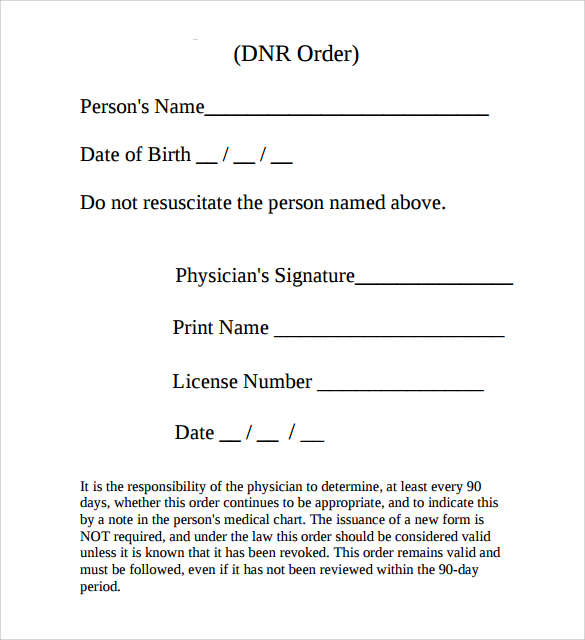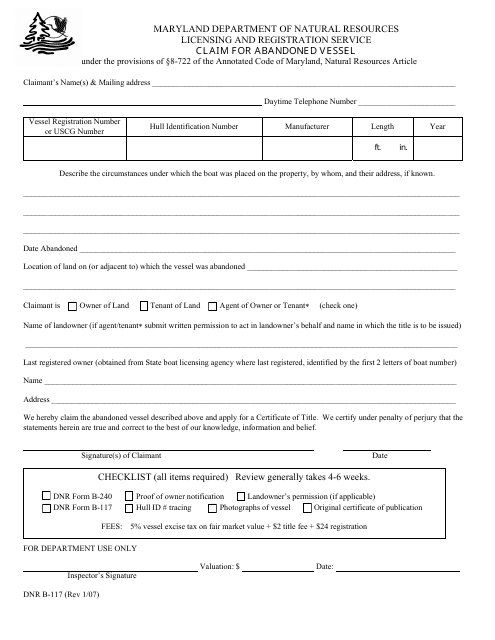Do Not Resuscitate, or DNR, is a medical decision that you or your loved ones may have to make at some point in your life. It’s a choice to inform healthcare providers that you do not want to undergo any life-saving treatments as your life nears its end.
A Guide to DNR Forms
 As we age, our families and loved ones may start to discuss end-of-life care and the steps they would like to take in their final moments. One of those discussions should include the Do Not Resuscitate forms.
As we age, our families and loved ones may start to discuss end-of-life care and the steps they would like to take in their final moments. One of those discussions should include the Do Not Resuscitate forms.
Do Not Resuscitate refers to a medical order, which informs physicians that they should not take any lifesaving measures in case a person’s heart stops beating or they stop breathing. A DNR order typically involves a conversation and agreement between a patient and their doctor. For patients who cannot communicate due to injury or illness, family members and loved ones are often responsible for making the decision.
There are several forms of DNR available today. Some states have different official forms than others, and some hospitals have their own forms that reflect specific policies or procedures. In this post, we’ll discuss some of the most commonly used DNR forms and their features.
WA DNR SM-6 Form
 The Washington State Department of Natural Resources (DNR) has its own DNR order form called the SM-6 form. It’s a legally binding document that patients and their doctors must sign to indicate their preferences for end-of-life care.
The Washington State Department of Natural Resources (DNR) has its own DNR order form called the SM-6 form. It’s a legally binding document that patients and their doctors must sign to indicate their preferences for end-of-life care.
It’s important to note that this form only applies to patients who do not wish to receive cardiopulmonary resuscitation or CPR. It does not prevent a healthcare provider from administering other medications, treatments, or pain management as needed.
DNR Form from pdfFiller
 Another commonly used DNR form is the one available from pdfFiller. This form includes several fields that need to be filled out by the patient or their representative, such as the patient’s personal information, their emergency contact, and the name of their primary physician. It also includes a checkbox to indicate whether or not the patient wants to receive intravenous medications.
Another commonly used DNR form is the one available from pdfFiller. This form includes several fields that need to be filled out by the patient or their representative, such as the patient’s personal information, their emergency contact, and the name of their primary physician. It also includes a checkbox to indicate whether or not the patient wants to receive intravenous medications.
This form, like many others, is not a one-size-fits-all document. It’s important to review the form carefully and make sure that it correctly reflects your specific preferences and wishes for end-of-life care.
Medical Term DNR Form
 The Medical Term DNR form is yet another type of DNR form that patients may use to ensure their preferences for end-of-life care are respected. This type of DNR order is also referred to as a DNR Comfort Care order and is often used in palliative care or hospice care settings where a patient’s comfort takes priority over their survival chances.
The Medical Term DNR form is yet another type of DNR form that patients may use to ensure their preferences for end-of-life care are respected. This type of DNR order is also referred to as a DNR Comfort Care order and is often used in palliative care or hospice care settings where a patient’s comfort takes priority over their survival chances.
This particular DNR form is filled out by a physician and requires their signature. It specifies that the patient wishes to receive no resuscitative or life-saving measures in case of cardiac or respiratory arrest, but does allow for treatments that provide comfort and relieve pain.
Printable DNR Form
 As the name suggests, Printable DNR Forms can be found on various websites online and be printed out and filled in with your specific preferences for end-of-life care. They are widely used because they are easy to find, easy to fill out and a cost-effective way to make sure your end-of-life care wishes are respected.
As the name suggests, Printable DNR Forms can be found on various websites online and be printed out and filled in with your specific preferences for end-of-life care. They are widely used because they are easy to find, easy to fill out and a cost-effective way to make sure your end-of-life care wishes are respected.
It’s important to note that, as with any DNR form, the Printable DNR Form is not always medically binding, and a healthcare provider may choose to provide life-saving measures regardless of the form’s instructions in certain situations.
Claim for Abandoned Vessel DNR Form
 The last type of DNR form we will discuss is the Claim for Abandoned Vessel DNR Form. This form is not related to end-of-life care, but rather to legal permission to claim an abandoned or unclaimed vessel in state waters.
The last type of DNR form we will discuss is the Claim for Abandoned Vessel DNR Form. This form is not related to end-of-life care, but rather to legal permission to claim an abandoned or unclaimed vessel in state waters.
If you want to take ownership of an abandoned vessel, you’ll need to fill out this form and send it to the Department of Natural Resources in the relevant state. The form requires a detailed description of the vessel, including its make, model, length, and registration number, as well as your personal details and a signature.
Final Thoughts
Having a DNR form in place is an important part of your end-of-life care plan. It’s vital that you take the time to discuss your wishes with your loved ones and healthcare providers and ensure that your preferences are documented correctly on a legally binding DNR form. With the right form in place, you can rest assured that your end-of-life care will reflect your personal values and wishes, and that your family and loved ones know your wishes should the worst happen.